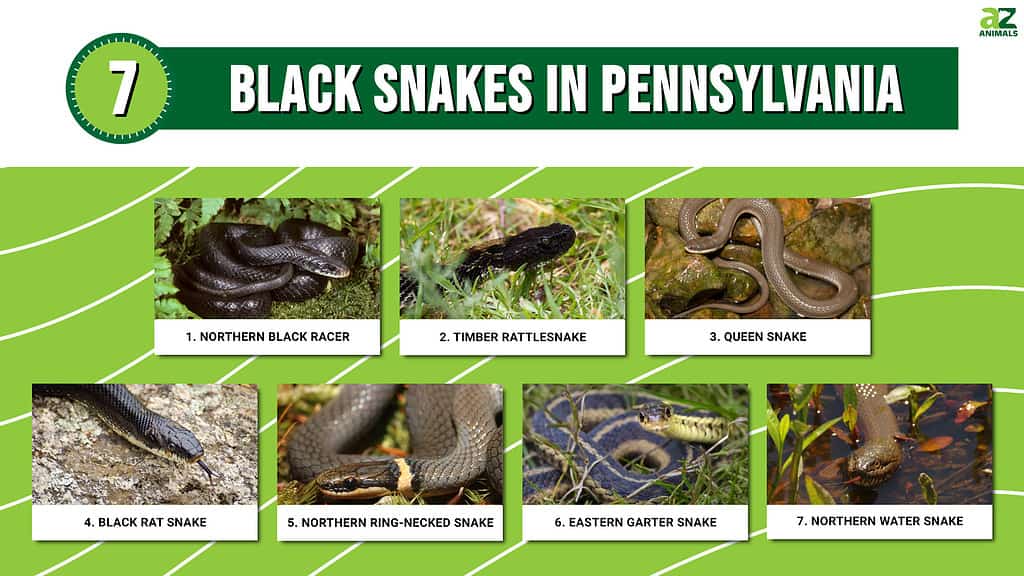
Black snakes in Pennsylvania that are most frequently encountered in the wild are easy to distinguish if you know the differences. Almost all of the snakes on this list have a non-black marking that allows you to differentiate between individuals from different species.
Most of the snakes in Pennsylvania do not pose any real danger to humans. This doesn’t stop people from mistaking snakes on this list for the highly venomous cottonmouth. The cottonmouth is not native to Pennsylvania as its range ends in more southern states.

Most of the snakes in the state of Pennsylvania do not pose any real danger to humans.
©iStock.com/rarrarorro
Some of the snakes listed here make great pets, though you should seek snakes from breeders instead of trying to capture one in the wild. That’s because snakes raised in captivity are easier to acclimate to a vivarium and have frequent handling.
We’ll take a closer look at the seven most common black snakes in the state of PA now.
1. Northern Black Racer
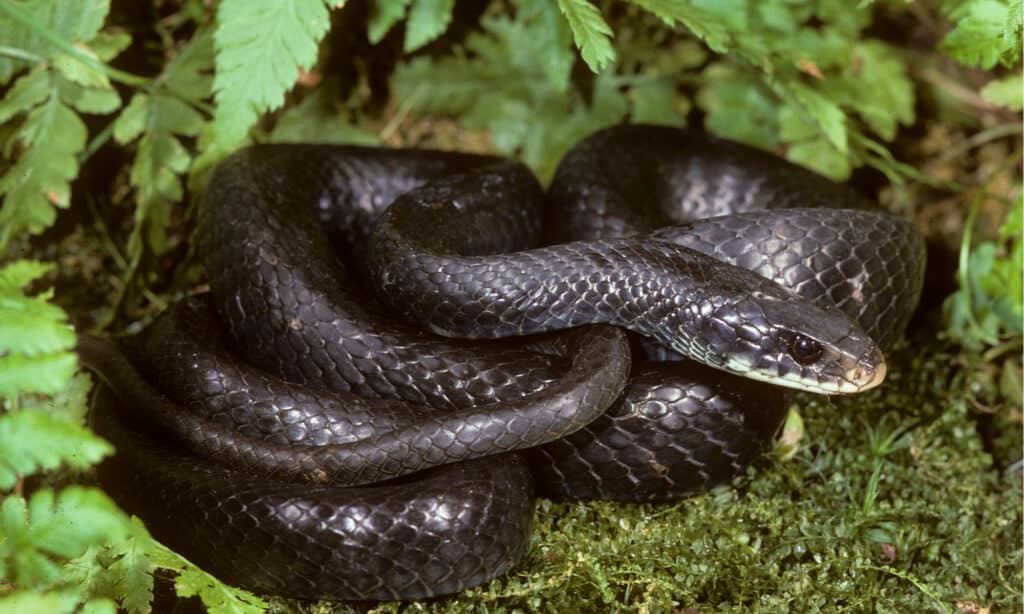
Northern black racers will bite if you try to handle them.
©Breck P. Kent/Shutterstock.com
Northern black racers are a common species in PA. They’re long and slender snakes that are capable of moving very quickly. They like to hang out under rocks or inside logs in fields, rocky hills, and grasslands. These snakes are excellent climbers, so they can be found in bushes and up in trees. Northern black racers are nonvenomous, but they still don’t like being bothered.
When a wild individual is picked up, it will likely bite repeatedly. You’ll know the snake is upset because it mimics a rattlesnake when threatened. It taps its tail against the ground to imitate a rattle.
Both their stomachs and their backs are black. Northern black racers usually have a small white patch under their chins. Juveniles are patterned and lighter in color, so their appearance is a great way to try and age one of these snakes.
2. Timber Rattlesnake
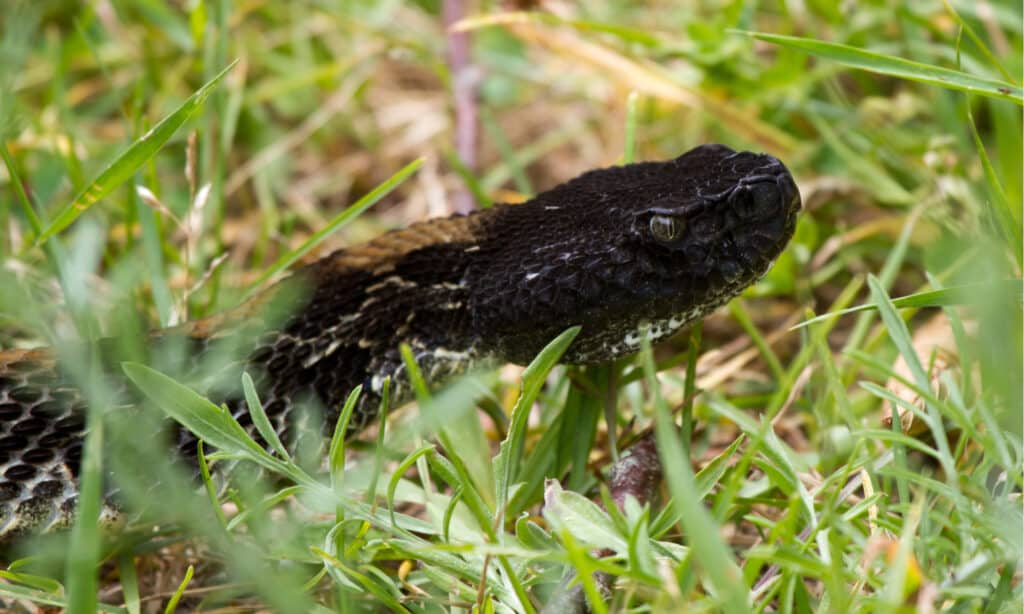
The timber rattlesnake is one of three venomous snakes in Pennsylvania.
©Frode Jacobsen/Shutterstock.com
The timber rattlesnake is the most dangerous snake in the state, and it’s one of three venomous snakes. It’s the only black venomous snake in PA.
Timber rattlesnakes are most commonly found along wooded edges of mountain ranges. They’re extremely venomous, but they aren’t aggressive unless threatened. These snakes go through two phases: a yellow and a black phase. When they’re in their black phase, they still have some obvious banded patterning. They appear almost all black, despite these bands.
3. Queen Snake
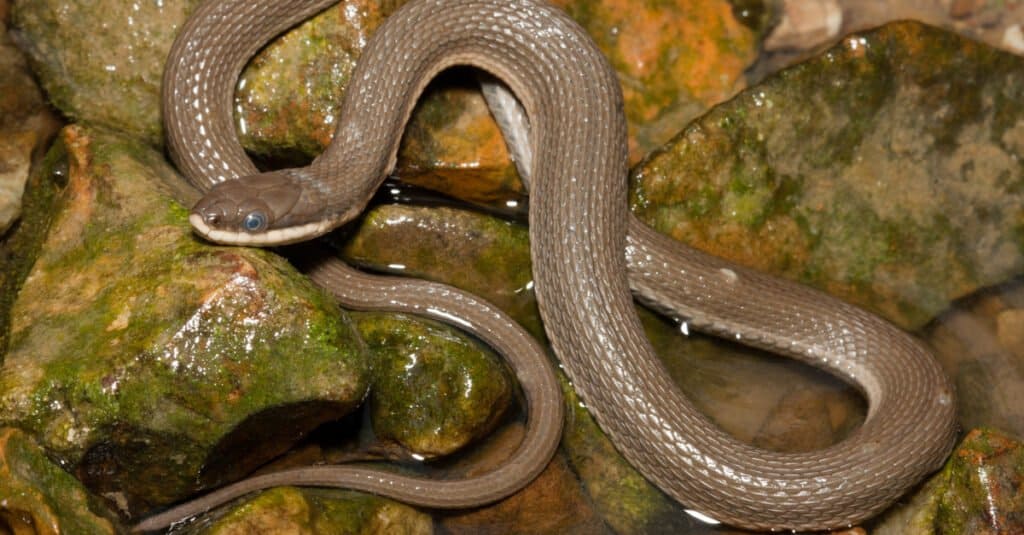
Queen snakes are nonvenomous and pose little threat.
©Nathan A Shepard/Shutterstock.com
Queen snakes are similar in appearance to rat snakes and are often misidentified as such. A yellow belly distinguishes them as well as their hardly visible brown stripes running down the length of their body. While these snakes are common in their range, they’re only found in the western and southeastern parts of the state.
Queen snakes are great swimmers, so they’re often confused with the deadly water moccasin. However, they are nonvenomous and pose little threat. They like rocky creeks and streams over large lakes or open ponds.
4. Black Rat Snake
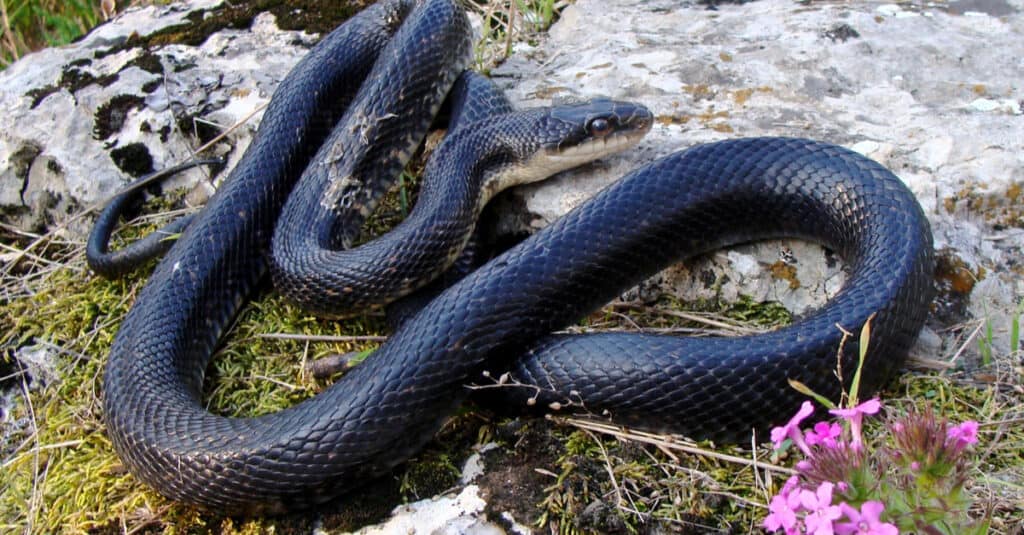
Black rat snakes are common because they aren’t picky about their habitats.
©Matt Jeppson/Shutterstock.com
Black rat snakes are eastern rat snakes that are all black. They aren’t different from eastern rat snakes, as it’s just a name for certain individuals within the eastern rat snake population.
Black rat snakes aren’t picky about their habitats and can be found everywhere. This makes them one of the most common snakes that people will encounter in the state. Farmers are especially familiar with these snakes, as they love the rodents around produce fields.
While black rat snakes can be spotted year-round, they’re most often out during the day in the fall and spring. Most brumate during the winter with other snakes like copperheads to conserve heat. They aren’t in danger during this moment because all the venomous snakes are too inactive from the cold to feed.
Black rat snakes produce a disgusting musk when threatened, but they are nonvenomous and relatively harmless.
5. Northern Ring-Necked Snake
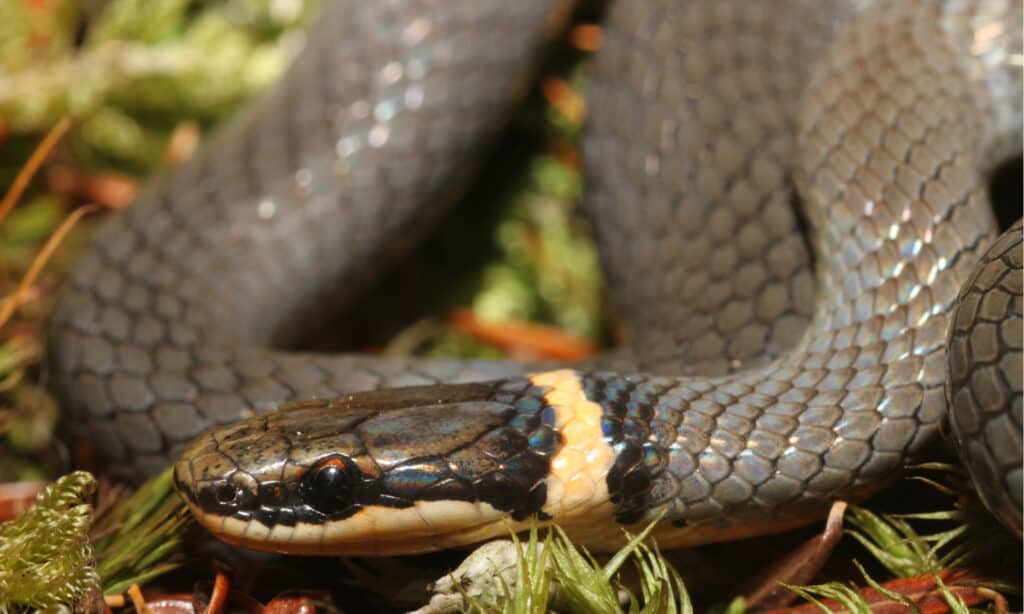
Northern ring-necked snakes have a characteristic band around their necks.
©/Shutterstock.com
Northern ring-necked snakes are common snakes in Pennsylvania. They are small snakes growing no more than two feet in length. They’re nocturnal and shy, so they’re rarely spotted by humans in the wild.
These snakes like damp habitats and hang out in wooded areas. They’re nonvenomous, but they release a musk when threatened that smells terrible.
Northern ring-necked snakes have a colored belly with matching ring around their neck. This bright color is usually yellow or orange. Sometimes they’re more bluish than black, but enough individuals are mostly black that this snake earned a place on our list.
6. Eastern Garter Snake
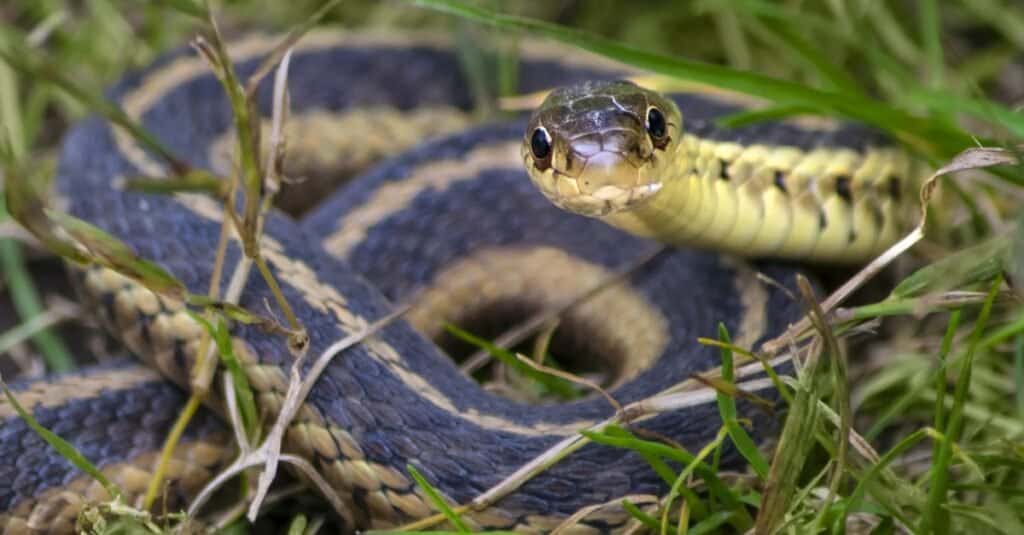
Garter snakes are often found around humans in grasses and gardens.
©K Quinn Ferris/Shutterstock.com
Most garter snakes have a black body with yellow stripes running down the length of this black body. These snakes are neither aggressive nor are they venomous. They can be approached in the wild or when you spot one in your yard.
Garter snakes like moist environments with lots of hiding spots. They’re so common in gardens that they are also known as garden snakes. These snakes are most commonly found roaming around between March and October.
An interesting characteristic of eastern garter snakes is their ability to adapt to a shortage of their usual food supply. Pennsylvania isn’t known for its amphibian populations, even though the eastern garter snake eats frogs as a substantial part of its diet.
7. Northern Water Snake

Northern water snakes are the only water snakes found in Pennsylvania.
©jmarino/Shutterstock.com
Northern water snakes are the only water snakes found in Pennsylvania. Some individuals are black, although they can come in a wide variety of colors. These snakes are often confused with water mocassins because they like the same type of aquatic environments. Individuals with certain colorations are also mistaken for copperheads.
Northern water snakes are non-aggressive, but you’ll know they feel threatened when they coil up and begin snapping. If you see this occurring on a snake you’ve encountered, slowly move away from the snake.
What State Has the Most Snake Bites?

The venomous cottonmouth snake is among the snakes responsible for snake bites in North Carolina.
©Marcum Havens/Shutterstock.com
According to research scientist Stephen W. Miller, from 2004 to 2018, Pennsylvania Poison Control Centers received a total of 1,452 reports of snake bites, with 847 of them being from venomous snakes. That averages out to about 104 bites per year. While it may sound like a lot, there are some states that definitely outrank Pennsylvania for snake bites.
What state ranks the highest in snake bites? That would be North Carolina. This southeastern state’s bite rate is 157.8 bites per million population per year. How does that average out? Well, the population as of 2021 was a little over 10 million (10.55 to be exact). If we were to just figure it off of 10 million, that would mean that there are roughly 1,580 reported snake bites per year.
The top 6 states for reported snake bites are as follows:
- North Carolina–157.8 bites per million
- West Virginia–105.3 bites per million
- Arkansas–92.9 bites per million
- Oklahoma–61 bites per million
- Virginia–48.7 bites per million
- Texas–44.2 bites per million
In North Carolina, there are 6 different kinds of venomous snakes: copperhead, cottonmouth, timber rattlesnake, pigmy rattlesnake, eastern diamondback rattlesnake, and eastern coral snake. In 2019, 92 people were bitten by venomous snakes in that state.
Summary Of Black Snakes In Pennsylvania
| # | Black Snake |
|---|---|
| 1 | Northern Black Racer |
| 2 | Timber Rattlesnake |
| 3 | Queen Snake |
| 4 | Black Rat Snake |
| 5 | Northern Ring-Necked Snake |
| 6 | Eastern Garter Snake |
| 7 | Northern Water Snake |
Other Black Animals Found In Pennsylvania
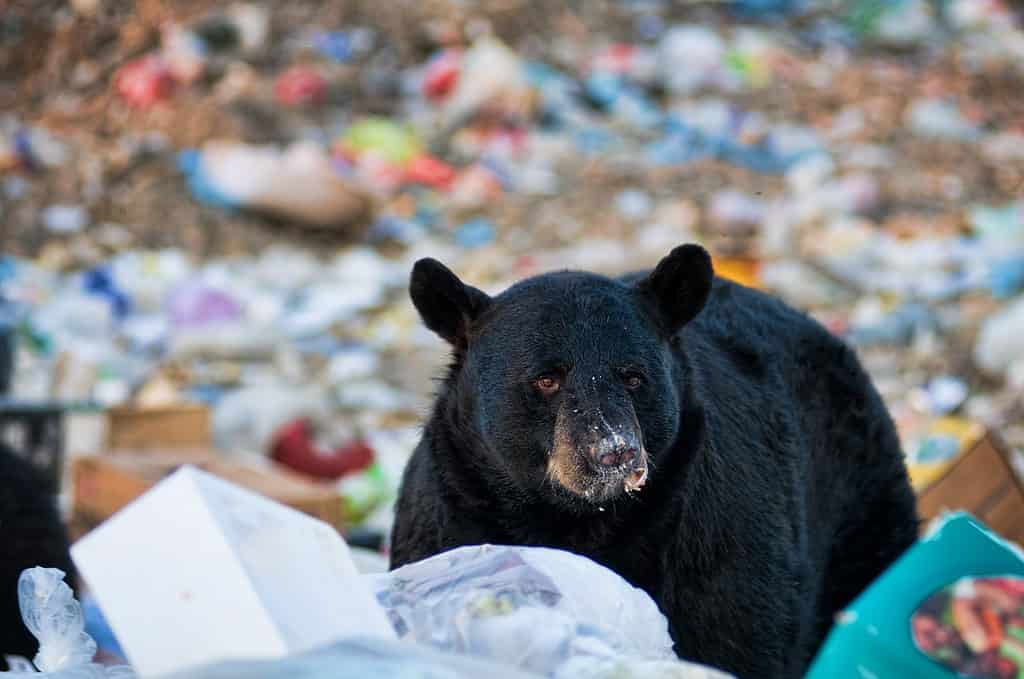
Black bears have an excellent sense of smell and will travel far for a meal.
©iStock.com/sianc
The North American black bear is the smallest bear found on the continent as well as the most widely distributed species. Although this bear is typically shy and timid, they are the most commonly encountered dangerous animal in Pennsylvania. This mammal can reach weights of up to 600 pounds and with its keen sense of smell, is able to detect food anywhere from backyard grills to garbage cans and bird feeders. They have been known to travel up to 40 miles for a meal.
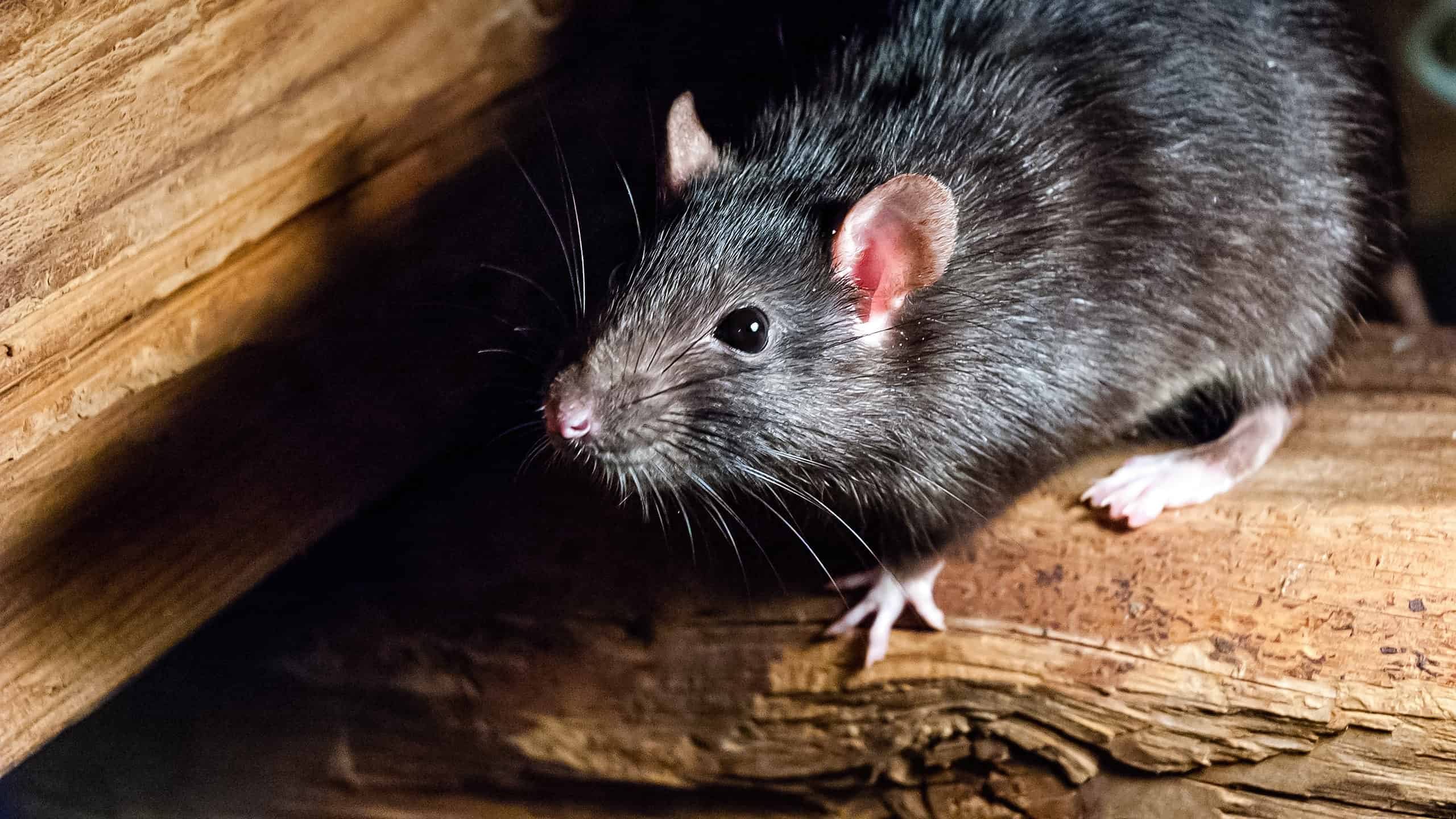
The black rat, also known as the roof rat.
©Carlos Aranguiz/Shutterstock.com
The black rat is a common rat that while most likely originated in India, can be found almost everywhere in the world. They vary in color from black to brown to light brown and were thought to have been forced out of Pennsylvania by the more aggressive Norway rat, although small populations can still be found in a few coastal seaports like Philadelphia. This rodent is also known as the roof rat or the ship rat and tends to find shelter in the upper regions of buildings.
The photo featured at the top of this post is © Matt Jeppson/Shutterstock.com
Discover the "Monster" Snake 5X Bigger than an Anaconda
Every day A-Z Animals sends out some of the most incredible facts in the world from our free newsletter. Want to discover the 10 most beautiful snakes in the world, a "snake island" where you're never more than 3 feet from danger, or a "monster" snake 5X larger than an anaconda? Then sign up right now and you'll start receiving our daily newsletter absolutely free.
Thank you for reading! Have some feedback for us? Contact the AZ Animals editorial team.






